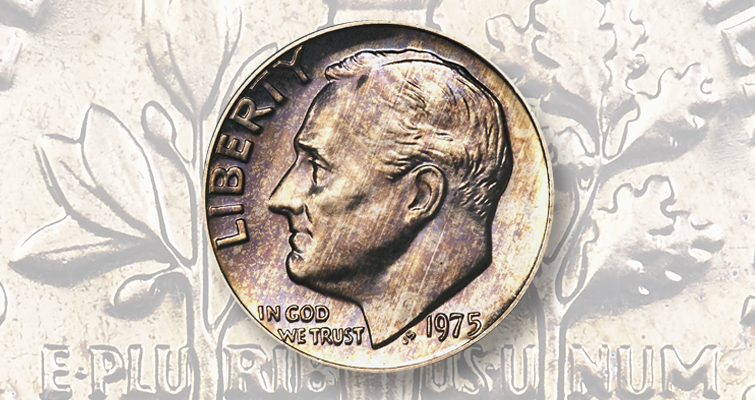Buyer Beware: The Tale of the Phantom Dime
Once upon a time in the wild west of online marketplaces, there thrived a band of opportunistic sellers, armed not with guns but with clever titles. They lure unsuspecting collectors into their web of deceit, promising them the chance to own a “very rare” 1975 Roosevelt Dime—without a mint mark. Spoiler alert: it’s about as rare as finding a rock in your backyard.
Imagine scrolling through listings, a breath held in anticipation, only to find bids for these “rare” dimes starting comfortably in the three-figure range. Could you be sitting on the next great treasure? Not quite. With chuckles, these sellers slap on the words “Rare” and “Very Rare” as if it were a trendy new cologne. In reality, they might as well be shouting “sucker!” from the virtual rooftops.
Let’s consult the wise sages at the sixth edition of the “Red Book” (the holy grail for numismatic enthusiasts). It reveals that a staggering 585,673,900 Roosevelt dimes were minted in 1975 without any mint mark. Yes, you read that correctly—585 million! Clearly, rarity isn’t their forte, as most of these beauties were produced for your everyday circulation, rather than to be cherished like a dog-eared comic book.
The confusion, dear readers, often stems from collectors mistaking the dime they think they’re purchasing—a Proof 1975-S Roosevelt, No S dime—for a regular ol’ 10-cent piece designed more for vending machines than for vaults. It’s like mistaking a gourmet burger for a mystery meat patty—both round, yes, but one definitely costs more at the diner.
Just to sprinkle a little more irony on this tale, the Mint actually struck 2.8 million Proof 1975-S Roosevelt dimes, which were all supposed to have a mint mark. Yet, only two (yes, just two!) escaped into the wild without it. One of these elusive gems sold for a jaw-dropping $349,600 at a Stack’s Bowers auction in 2011. The other? A staggering $456,000 in 2019. At this rate, you might as well start training squirrels to find buried treasure in your backyard.
Both of these unmarked dimes were authenticated in a rather dramatic twist back in 1977 when an unsuspecting set was sent to Coin World’s Collectors Clearinghouse. Yet, despite discovering this rare error, Mint inspectors put a halt to further releases, leaving avid collectors crying into their mint condition albums. The takeaway? Rarity is showcased in the couple of coins that exist, leaving the masses to fight over the pile of dimes your uncle probably tossed in a jar twenty years ago.
Now, if you’re busy clicking around online and find yourself staring at uninspiring cardboard holders and little more context than “1975 Roosevelt dime no mint mark,” the warning bells should be sounding. Ask yourself—does this penny for your thoughts deserve three figures? Oh, and don’t forget the classic rule of online shopping: if it seems too good to be true, it probably is. Especially if the word “rare” is thrown in; that’s just a siren call for wannabe investors.
So, dear treasure hunters, let this be a humorous cautionary tale. Whether it’s a sludgy dime or a diamond in the rough, make sure you know what pocket change you’re actually getting into. Otherwise, you might just end up paying top dollar for what’s essentially a trip to the vending machine—but with none of the joy of candy after. Your wallet will thank you.

